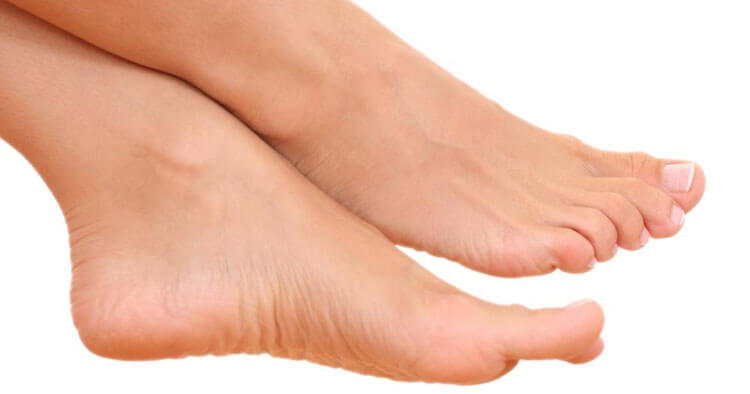Muscle Pain and Tendinopathy, Sports Injuries and Management
Plantar Fasciitis A Common Cause Of Heel Pain
What Is Your Plantar Fascia?
The plantar fascia is a thick fibrous band of connective tissue that originates from the bottom surface of your heel bone (anatomically known as the calcaneus). From its point of origin at the medial calcaneal tubercle the plantar fascia extends along the sole of the foot fanning out as it moves towards the toes. The plantar fascia serves to function as a passive support and stabilizer to the arches of the foot, assisting in the limiting of any over flattening of the arches. Specifically with regard to plantar fasciitis, is the condition of inflammation of the plantar fascia, a common cause of heel pain in middle aged adults.
What Is Plantar Fasciitis?
Although historically called plantar fasciitis, the majority of practitioners these days when referring to heel pain originating from the plantar fascia use the term plantar fasciosis, or plantar fasciopathy. These terms are considered a more accurate nomenclature for what is going on at a cellular level. The formerly named plantar fasciitis is a a foot condition characterized by heel pain originating in your plantar fascia, described above as a strong and dense connective tissue structure on the sole of your foot. Traditionally it was believed that inflammation was the principle and underlying cause of this source of heel pain. However histologically using the term plantar fasciosis is more accurate, because this cause of heel pain typically involves degeneration, microtears and cell death in the plantar fascia, more so than any inflammatory reaction.
What Are Some Of The Causes Of Heel Pain?
For a lot of sufferers, plantar fasciitis is a painful condition which often seems to come out of nowhere.
- Often associated with running and jumping sports, particularly in the aging athlete (those over the age of 40).
- The trigger of such heel pain is usually initiated and/or exacerbated via high load stretching forces on the plantar fascia. Where the plantar fascia is repeatedly overstretched under load during activity.
- Heel pain from the plantar fascia can also be triggered from compression, where either traumatically, or repetitively the individual lands on an object, or hard surface (often in inappropriate footwear) subsequently “bruising” the plantar fascia and potentially triggering a process of inflammation and/or degeneration.
What Does Plantar Fasciitis Feel Like?
There is typically no obvious swelling, bruising or other visual signs, so for most sufferers the first sign they could have plantar fasciitis is the onset of heel pain, or pain in the arch of your foot. The pain is normally most noticeable first thing in the morning, or following prolonged rest, felt as a sharp discomfort when putting the foot on the ground, after a period of non-weightbearing.
The pain is often worst with the first few steps only to dissipate as it “warms up”.
As with several other overuse injuries, heel pain associated with plantar fasciitis will often deteriorate in the following pattern if not treated:
- Firstly the individual experiences heel pain following exercise, on cooling down, or more noticeable the morning after when rising from bed.
- As things worsen, heel pain will then be felt at the start of exercise, ease throughout the activity as it “warms up” only then to be felt again after exercise as mentioned above.
- The following stage for plantar fasciitis regression (and many overuse injuries) is that the pain will be present throughout the entirety of the activity, no longer “warming up” and going away during exercise. And again feeling worse immediately after exercise and the following day/s.
- The final stage is where the pain progresses to the point that heel pain is experienced all the time, variable related to activity levels but never fully settling.
Risk Factors For Plantar Fasciitis
There are a number of reasons someone may be more prone to experiencing heel pain from plantar fasciitis, some of them include:
- Age: With ageing the arches of your foot may begin to “sag” placing additional strain on the plantar fascia.
- Age: The cushioning fat pad under the heel thins with age, this can result in more compressive pressure being placed directly on the origin of the plantar fascia.
- Activity Choices: Exercise that places excessive stress, stretching load on the plantar fascia such as running and high impact aerobic classes are risk factors for developing heel pain. As well as this, jobs that require long periods of time standing, or walking on hard surfaces such as factory workers also pose a risk.
- Obesity: Carrying any extra weight increases the stress and strain on your plantar fascia resulting from the additional load going through the foot in weightbearing activities.
- Foot Arch And Footwear: Wearing shoes with poor support, or the wrong support for your arch type can stress the plantar fascia. The wrong shoe can put stretch and strain on plantar fascia or not provide the appropriate cushioning. These situations can mean the plantar fascia has to absorb the additional loading forces going through the foot and will be more prone to overloading.
- Pregnancy: Laxity of ligaments, as well as weight gain and swelling during pregnancy can cause additional stress to the plantar fascia, meaning women who have never experienced heel pain prior, suffer with plantar fascia pain for their first time during pregnancy.
- Weak Muscles: Weakness of the intrinsic and extrinsic muscles of the foot that normally support and help control the foot arch, can lead to increased stress falling on the plantar fascia when certain muscles aren’t doing their job properly.
Disclaimer: Sydney Physio Clinic does not endorse any treatments, procedures, products mentioned. This information is provided as an educational service and is not intended to serve as medical advice. Anyone seeking specific advice or assistance regarding Plantar Fasciitis A Common Cause Of Heel Pain should consult his or her orthopaedic surgeon, general practitioner, sports medicine specialist or physiotherapist.


